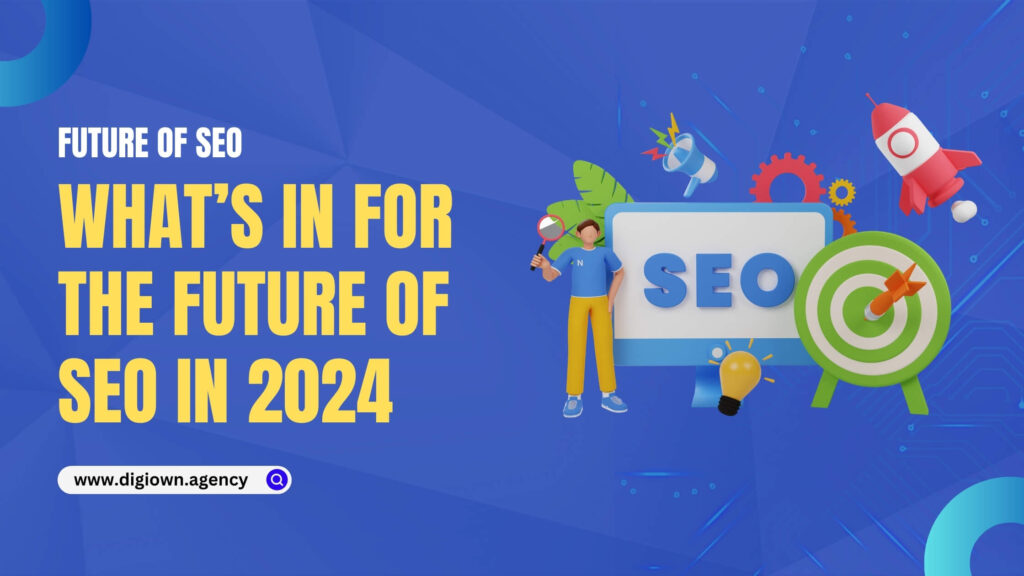

In 2024, SEO continues to be a critical component of digital marketing strategies, adapting to technological advancements and changing user behaviors. Understanding the future trends of SEO is essential for staying competitive in the online landscape.
Table of Contents
- 1 First-Party Data Hub from SEO Traffic
- 2 Page Speed Optimization
- 3 Content Refresh Strategy
- 4 User Search Intent
- 5 Creating Dynamic and Evergreen Content
- 6 Mobile-Friendly Website
- 7 Semantic Search Optimization
- 8 Google Discover Optimization
- 9 Enhanced User Experience
- 10 AI and Machine Learning in SEO
- 11 Voice Search Optimization
- 12 E-A-T (Expertise, Authoritativeness, Trustworthiness)
- 13 Video SEO
- 14 Core Web Vitals
- 15 Conclusions
First-Party Data Hub from SEO Traffic
First-party data has become invaluable as privacy concerns and regulations increase. Collecting data directly from users through SEO efforts helps build a robust data hub, enhancing personalization and targeting. This data can be leveraged to create more precise marketing campaigns and improve user experience.
Page Speed Optimization
Page speed remains a vital factor for both user experience and search engine rankings. With Google’s Core Web Vitals emphasizing performance metrics, optimizing page load times is crucial. Utilizing tools like Google PageSpeed Insights and implementing techniques such as image compression, browser caching, and minimizing JavaScript can significantly boost page speed.
Content Refresh Strategy
Regularly updating content ensures it remains relevant and valuable. Conducting content audits to identify outdated information and implementing a refresh strategy can enhance SEO performance. This includes updating statistics, improving readability, and adding new insights to existing articles.
User Search Intent
Understanding user search intent is fundamental to effective SEO. By analyzing search queries and user behavior, content can be tailored to meet the specific needs and questions of the audience. This approach increases the likelihood of higher rankings and better user engagement.
Creating Dynamic and Evergreen Content
Dynamic content that evolves with trends and evergreen content that remains relevant over time are both essential. Dynamic content keeps users engaged with current topics, while evergreen content continues to attract traffic long after publication. Balancing both types ensures sustained SEO success.
Mobile-Friendly Website
With the majority of searches now conducted on mobile devices, a mobile-friendly website is imperative. Google’s mobile-first indexing prioritizes sites that are optimized for mobile viewing. Ensuring responsive design, fast mobile load times, and intuitive navigation enhances mobile user experience and SEO rankings.
Semantic Search Optimization
Semantic search focuses on understanding the context and meaning behind search queries. Optimizing for semantic search involves using structured data, natural language processing, and contextually relevant keywords. This helps search engines better understand and rank content accurately.
Google Discover Optimization
Google Discover offers personalized content recommendations to users. To optimize for Google Discover, create high-quality, engaging content that aligns with user interests and follows best practices for SEO. Visual content, timely updates, and compelling headlines can increase visibility in Discover feeds.
Enhanced User Experience
A positive user experience (UX) is crucial for retaining visitors and improving SEO. Factors such as intuitive navigation, fast load times, mobile responsiveness, and accessible design contribute to a better UX. Focusing on these aspects not only enhances user satisfaction but also boosts search engine rankings.
AI and Machine Learning in SEO
AI and machine learning are transforming SEO by enabling more sophisticated search algorithms and analysis. Tools leveraging AI can provide insights into user behavior, automate content creation, and enhance keyword research. Staying updated with AI advancements helps in optimizing SEO strategies effectively.
Voice Search Optimization
With the rise of voice-activated devices, optimizing for voice search is becoming increasingly important. Voice search queries tend to be longer and conversational. Focusing on natural language keywords, featured snippets, and local SEO can improve visibility in voice search results.
E-A-T (Expertise, Authoritativeness, Trustworthiness)
Google emphasizes the importance of E-A-T in content evaluation. Establishing expertise, authoritativeness, and trustworthiness involves creating high-quality, well-researched content, building backlinks from reputable sources, and ensuring transparency. This enhances credibility and improves search rankings.
Video SEO
Video content is gaining prominence in search results. Optimizing video content involves using descriptive titles, relevant tags, and transcripts. Hosting videos on platforms like YouTube and embedding them in relevant blog posts can drive traffic and improve SEO performance.
Core Web Vitals
Core Web Vitals are critical metrics that affect search rankings. These include Largest Contentful Paint (LCP), First Input Delay (FID), and Cumulative Layout Shift (CLS). Improving these metrics involves optimizing server response times, implementing efficient coding practices, and ensuring visual stability.
Conclusions
The future of SEO in 2024 is shaped by advancements in technology and shifts in user behavior. Staying ahead requires continuous adaptation to new trends and best practices. By focusing on the outlined strategies, businesses can ensure their SEO efforts remain effective and drive sustained success.






